Exploring the coastal fishing villages of Cornwall is an experience you shouldn’t pass up on when visiting the county.
These small fishing villages are perfect for experiencing a piece of Cornish fishing culture, soaking in the beauty of the ocean and hillside, and munching on some fresh seafood or Cornish pasties.
Scattered along the southwestern coast of England, these quaint seaside towns have centuries-long histories– making it essential to visit these villages if you’re looking to get a taste of traditional Cornish culture.
You’ll also get to snap some gorgeous photos guaranteed to look like they belong on a postcard– whether it’s of golden sunlight breaking on the water, or the view of Cornish hills dipping to meet the sea.
However, with so many villages dotting the region’s 300-mile rugged coastline, you likely won’t be able to visit every single one.
If you’re wondering which fishing villages in Cornwall you should definitely see, here’s a rundown of the 10 best places to visit:
Why are there So Many Cornish Fishing Villages?
Fishing and gathering seafood on the Cornish coast goes back to the Paleolithic era when hunter-gatherers occasionally collected seafood around these sandy shores.
Although these Cornish fishing villages weren’t established in the Stone Ages, they still have a long history after settlements built themselves into these coves during the Middle Ages.
These places eventually developed into the many quaint fishing villages we still see today.
For centuries, fishing and catching seafood—be it pilchards (Cornish sardines), mackerels, herrings, lobsters, or crabs—has fueled the Cornish economy. Even today, fishing continues to be an important part of life in these settlements.
Here’s our take on the 10 best fishing villages in Cornwall:
Porthleven
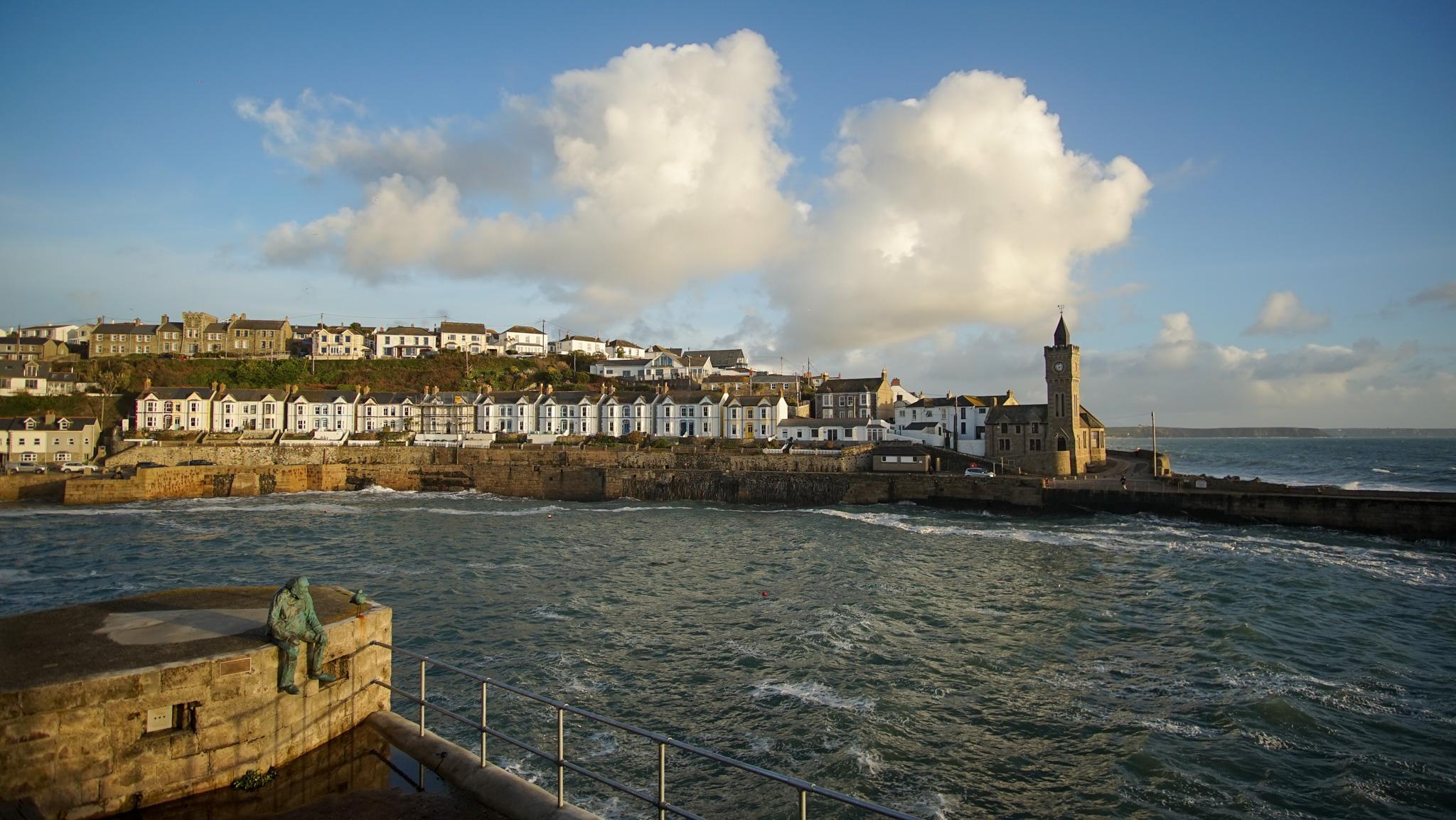
As the southernmost working port in England, Porthleven offers a breathtaking view of the English Channel.
The village’s port and square harbour offers stunning views and opportunities to capture mesmerising photos of boats bobbing on the azure water within its gates.
Make sure to check out Porthleven’s 70-foot-high Bickford-Smith Institute and Clocktower, which stands by the harbour mouth.
The building was opened in 1884, and is an iconic part of Porthleven’s cityscape. It’s also Grade II listed, designating it as a building of special interest.
Be careful on stormy days though. Thanks to the clock tower’s location by the harbour, it’s known for getting a bit of a splash from large waves when the weather is particularly bad.
After admiring the village’s beauty, walk along the coast to reach Loe Bar Beach, where you can explore diverse rock pools.
While you’re there, check out the famous Loe, the largest natural freshwater lake in the county that the narrow beach separates from the sea. It’s quite a breathtaking sight!
St Ives
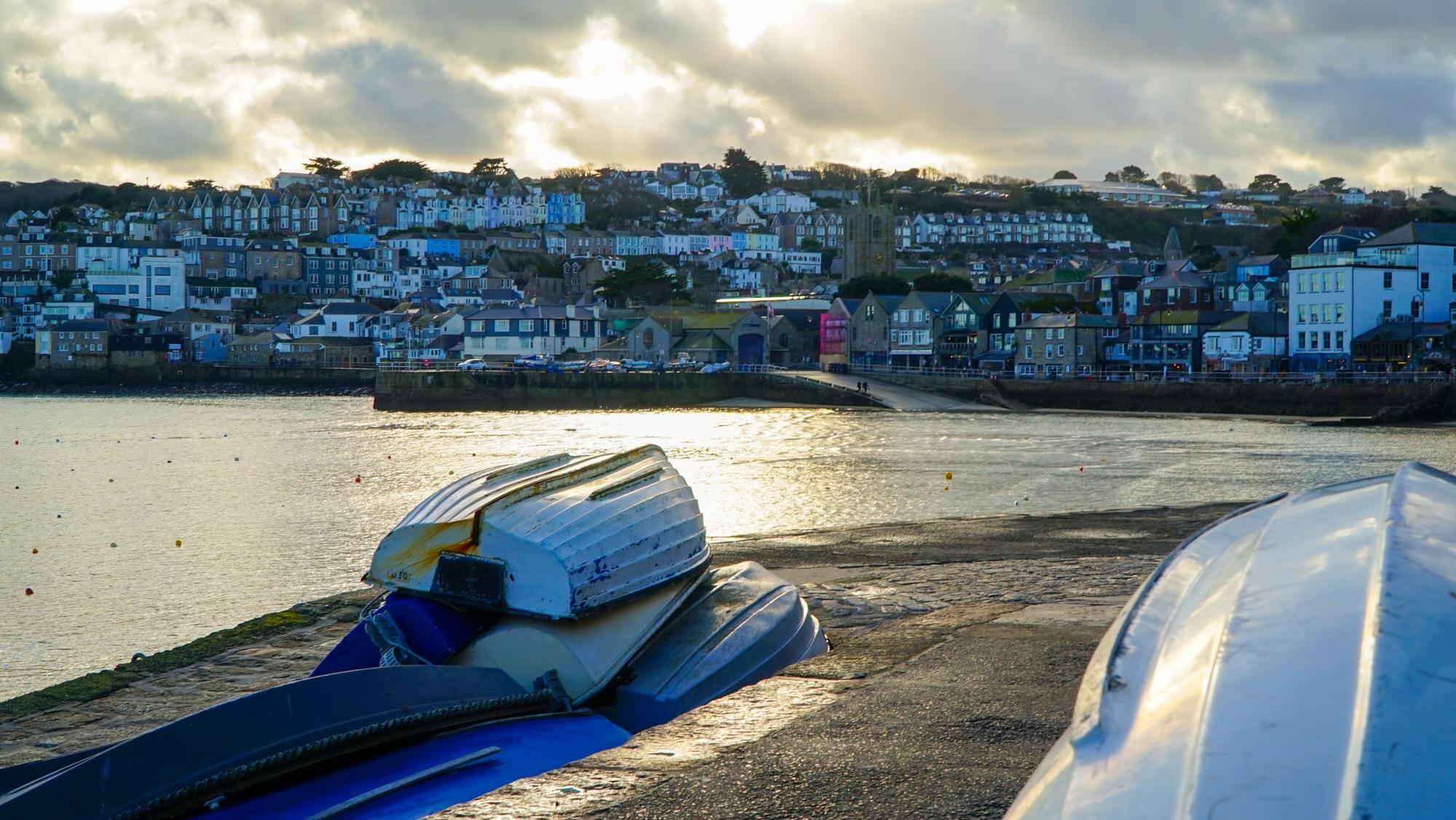
Of course, a list of Cornwall’s best fishing villages isn’t complete without St Ives– one of the county’s most popular destinations.
The village was named after St Ia of Cornwall, an Irish princess and missionary from the fifth century said to have been carried across the Irish Sea to Cornwall on a leaf. Its Cornish name, Porth Ia, means “St Ia’s cove”.
The still-operating local St Ia’s Church is dedicated to the saint, and is a Grade I listed building (meaning that it’s of exceptional interest). If you visit this mediaeval building, you’ll see carved bench ends that date back to the fifteenth century, and which are still in use today.
While you can’t go wrong with any of the village’s six gorgeous beaches, you should definitely put the picturesque Porthminster Beach at the top of your list.
The gorgeous beach was voted as one of TripAdvisor’s top 10 European beaches for its crystal-clear water and fine, golden sand.
As the village boasts many award-winning eateries, ranging from beach cafes to fancy seafood restaurants, you’ll never run out of great places to eat.
St Ives is also known for its art scene, which you can check out through a walk down its cobbled streets. Here the streets are dotted with smaller galleries, but you should definitely visit the Tate Gallery and the Barbara Hepworth Museum and Sculpture Garden.
If you’re looking for an experience out in nature, board a boat from St Ives to Seal Island and watch its resident grey seals go about their day.
Boscastle
Like the other fishing villages, Boscastle is quaint, picture-perfect, and has centuries’ worth of history.
Unlike others, it also has a bit of fairytale magic.
Named after the Bottreaux family who inhabited the coast in 1080, Boscastle has since developed from this motte-and-bailey fortress into an idyllic fishing village, filled with plenty to do and see.
The village’s most iconic landmark is the Bottreaux Castle, which today is nothing more than a few surviving earthworks.
While the village was flooded and almost destroyed in 2004, Boscastle has since bounced back and recovered– all while still maintaining its original charm.
Take a walk by the River Valency as it leads into the Boscastle harbour, and you’ll soon appreciate the rustic allure of village life.
For literature enthusiasts, Boscastle was also home to the writer Thomas Hardy. Hardy’s legacy is more than just his writing; in fact, you can see Hardy’s impact when you visit the St Juliot Church, a mediaeval church that Hardy was involved in restoring as an architect in 1867.
While in the area, make sure to go on a scenic coastal walk to visit the nearby Tintagel Castle. According to some Arthurian legends, this castle was the birthplace of King Arthur.
For fans of the occult, Boscastle also has the Museum of Witchcraft and Magic. A fascinating museum that captures Cornwall’s magic, it is well-curated with an impressive collection of over 3,000 objects.
Mevagissey
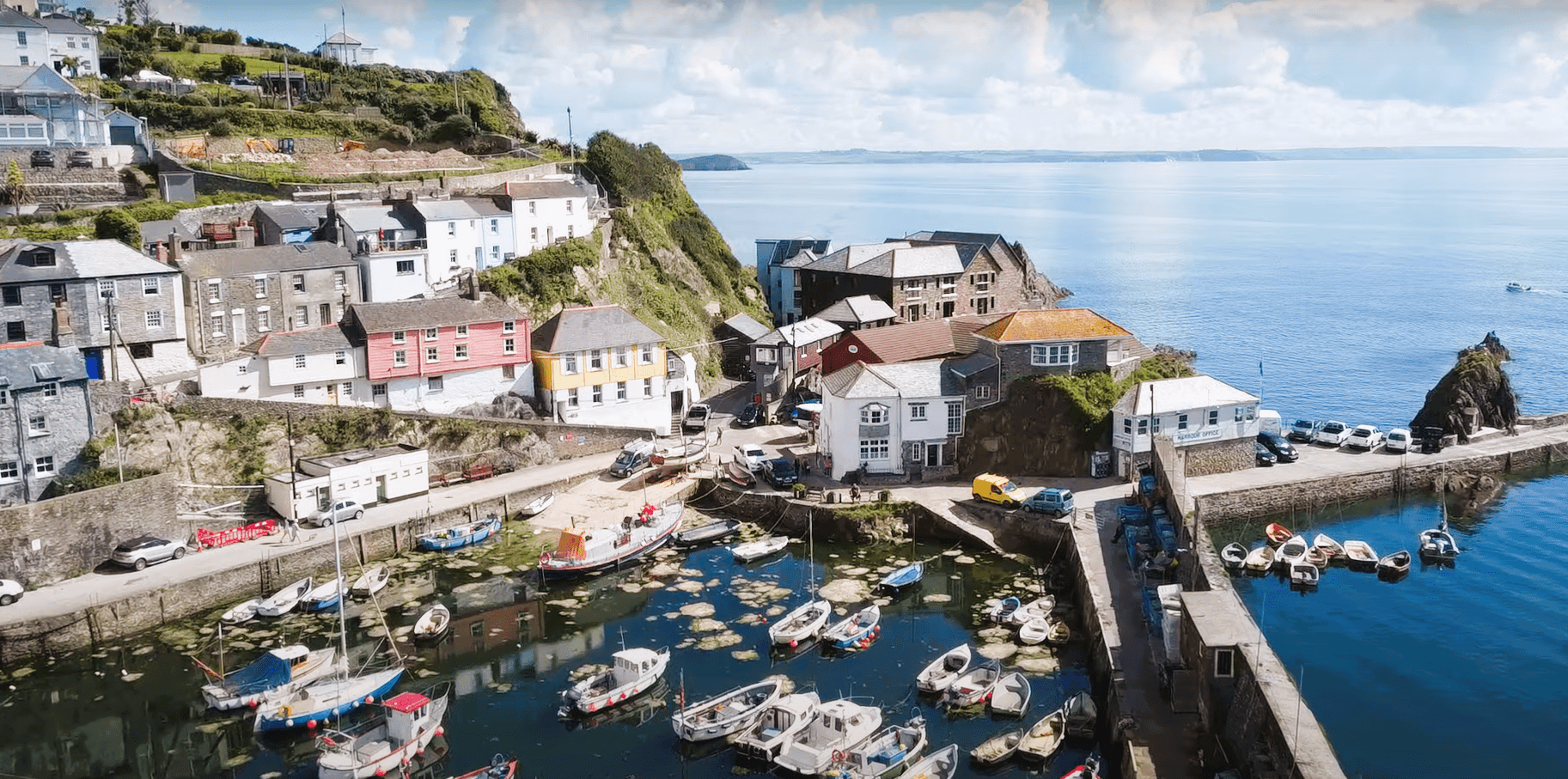
This Cornish fishing village has not one, but two saintly namesakes—St Meva and St Issey.
Possibly the oldest settlement in this list, Mevagissey began as two separate settlements, Lammorick and Porthilly.
In the sixth century, a group of missionaries including St Meva and St Issey arrived in the area from Brittany. This resulted in a church that united the two settlements into Mevagissey.
Once the centre of the pilchard fishing industry, Mevagissey remains one of Cornwall’s most well-known fishing harbours. Here, you’ll not only see fishing and leisure boats docking, but also get to explore the local museum and aquarium located right on the harbour piers.
Buy some fish and chips from the local chippy and sit by the water, then walk down its narrow cobblestone streets to peruse the fishing villages’ unique gift shops.
Make sure to also explore the Lost Gardens of Heligan. “Lost” and left to grow wild following the outbreak of World War One, the gardens underwent a complete restoration in 1990.
Today, it’s a massive green space made up of wonderful biodiversity and filled with sculptures, walks, and activities for the whole family.
Mousehole
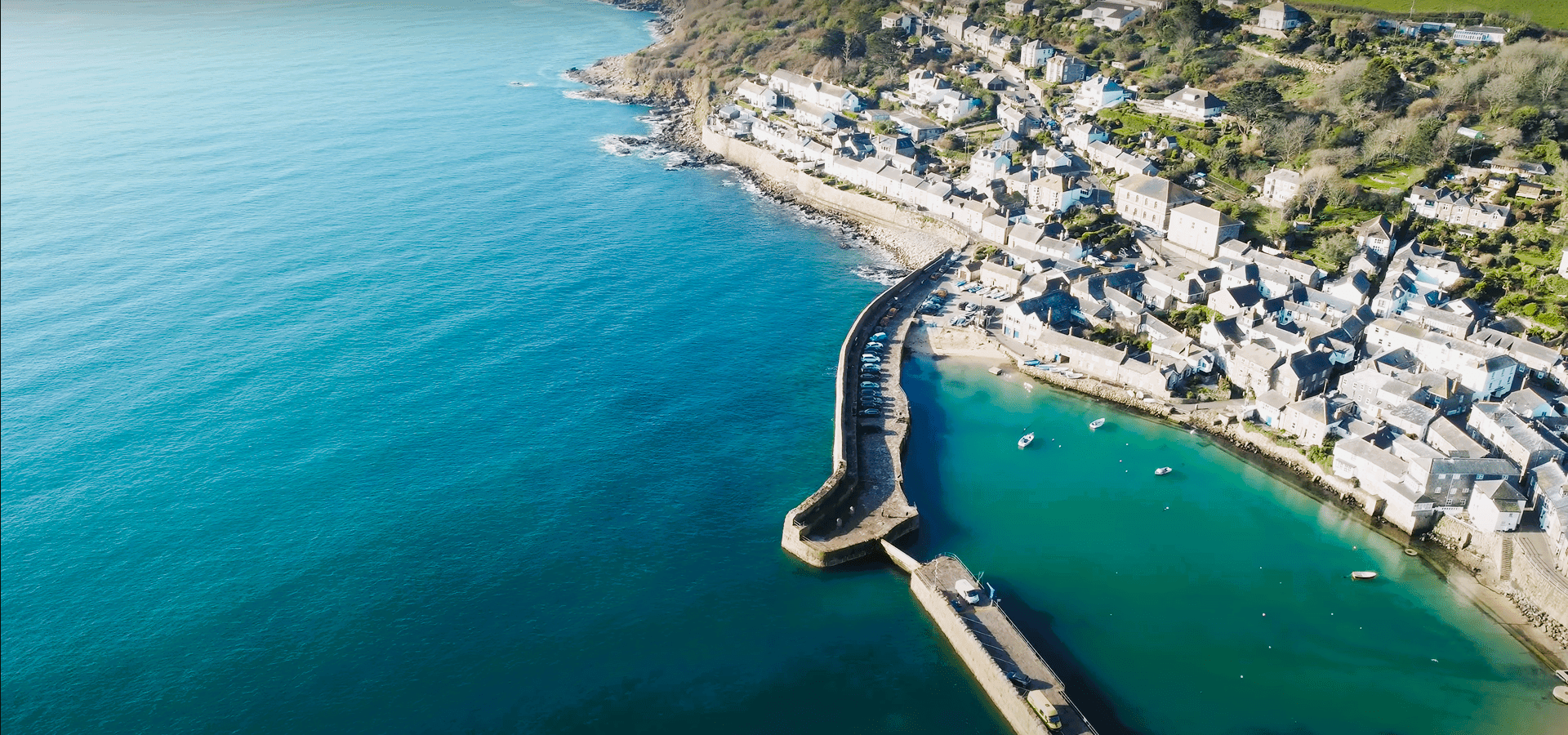
If Mousehole’s name evokes the image of a quaint village out of a fairytale, you won’t be too far off from the truth.
Described by the poet Dylan Thomas as “quite the loveliest village in England”, this tiny fishing village is known for its small mouse hole-like entrance to its harbour.
That being said, do note that the village’s name is pronounced “Mow-Zel”, and not “mouse hole”.
For lunch, why not try an authentic stargazy pie? This is a traditional Cornish pie dish served with pilchards that are, well, gazing at the stars through their blanket of pastry.
Although you’ll be able to find this dish elsewhere in Cornwall and in other parts of England, stargazy pie originated in Mousehole, and the village even has an annual Stargazy pie celebration every December 23rd at the Ship Inn.
Even dining and staying at the Ship Inn is an experience you shouldn’t miss. The inn dates back to 1838, and has been a popular spot with locals and visitors since.
For fans of Thomas’ poetry, you may want to know that the poet frequented the pub when he visited the village for his honeymoon in 1937. The bar has even dedicated a special “Dylan’s Corner” in his honour.
If you’re looking to avoid crowds of tourists, Mousehole is an excellent choice as most tourists who visit the surrounding area visit the nearby Penzance instead.
Port Isaac
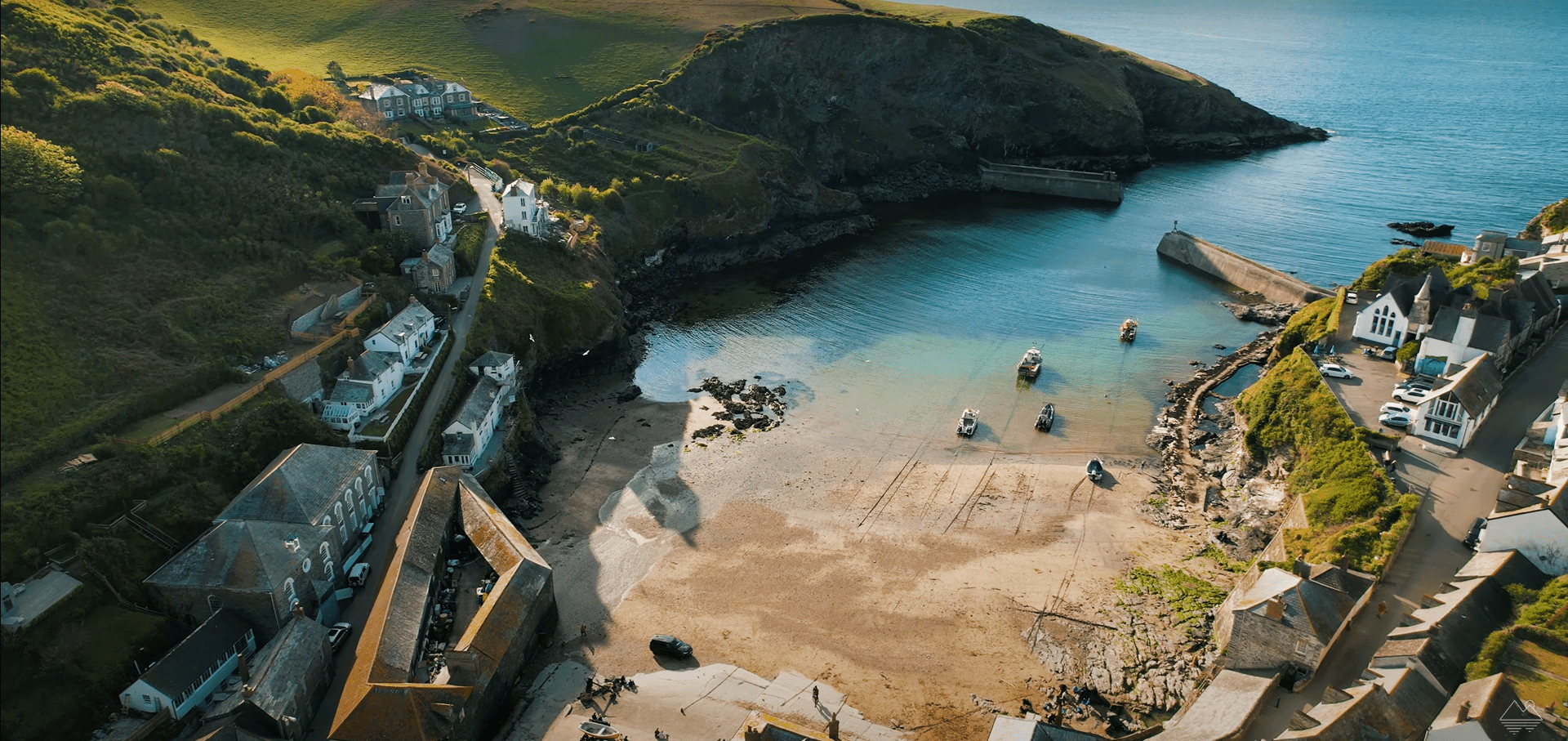
For fans of Doc Martin, this is the village to visit.
Port Isaac is the real-life Portwenn from the series, and you can even go on a Doc Martin tour to see the locations where they filmed the TV show.
On this tour, you’ll visit Martin’s cottage and surgery, Louisa’s school, and all the winding narrow streets you might be familiar with from the show.
Don’t worry about missing out if you aren’t interested in sitcom doctors, though; Port Isaac still offers plenty to do.
Admiring old granite buildings, getting lost wandering the side streets, or just sitting by the harbour and watching as boats leave and dock are ideal activities you can do to pass time.
Port Isaac also has many exciting coastal walks, and you can even go on a boat trip to see the dolphins and seabirds that live around the nearby Camel Estuary
Charlestown

Charlestown is another small fishing village in Cornwall that you might have seen on your TV screens.
After all, its harbour was used for the Poldark TV shows– both in the original seventies series, and the recent one starring Aidan Turner. The village was also the setting for other TV series and films, like Doctor Who and Saving Private Ryan.
With its old stone cottages and impressive tall ships that gather in its harbour, this fishing village will whisk you back in time to the eighteenth century.
Be sure to visit the Shipwreck and Heritage Centre as well, which has a collection of objects gathered from over 150 shipwrecks that paint Charlestown’s maritime history.
Polperro

Polperro, the quintessential fishing village, is picturesque and inviting. Exploring life in this small, seaside town is as easy as taking a stroll past fishermen’s cottages, lush greenery, and its stunning harbour cove.
With plenty of eateries, shops, and art galleries, you’re guaranteed to have fun just by spending a day walking through the village’s streets.
A memorable place to visit while at the fishing village is the Polperro Heritage Museum of Smuggling and Fishing, the country’s only smuggling museum which tells the history of the activity in the area.
The smuggling of goods such as silk, tea, and tobacco took place all around Cornwall from the thirteenth to the eighteenth century. In particular, Polperro had a reputation for smuggling, and it even became a major part of the village’s income in the nineteenth century.
If the village isn’t quaint enough for you, you’re sure to be charmed by an even smaller, and incredibly-detailed version of the village at the Polperro Model Village Land of Legend & Model Railway.
Sennen Cove
Flatter than many of the other villages on this list, Sennen Cove is a bit easier if you want to avoid climbing up and down tight narrow streets.
Sennen Cove Beach is a breathtaking, sandy beach that’s perfect for a picnic in the summertime.
Whether you’re an experienced surfer (or just want to try paddling around a bit), this is the beach for you! Hire a board, head out on the crystal clear water, and try to catch those waves.
An easy 20-minute walk southward will take you to Land’s End, an iconic piece of Cornwall’s natural beauty where you’ll see spans of cliff faces meeting the sea.
The site has been venerated for millennia, inspiring Arthurian legend, poetry, and Celtic myths, and is an absolute must-visit when in the area.
Mullion Cove

Mullion is the largest village on the Lizard Peninsula, and is listed as an Area Of Outstanding Natural Beauty by the UK Government. Here, you can admire the astonishing natural landscape of hills surrounding the cove.
Make sure to visit the St Mellanus Church, a Grade I stone church dating back to the thirteenth century situated in the middle of the village. Inside, you’ll spot intricately carved pews and mediaeval stained glass windows.
Take a break from your exploring and have a pint at The Old Inn, a traditional thatched pub that has been serving customers since the sixteenth Century.
The Old Inn is dog-friendly too, and will happily serve any four-legged friends who might be with you on your trip!
If you want to avoid other tourists, Mullion is the perfect destination for you

Introducing Eliot, the Editor here and Cornwall local with a wanderlust spirit and an insatiable appetite for adventure. With a passion for the great outdoors, he can often be found catching waves on his surfboard, scaling peaks on a hiking trail, or discovering hidden gems in his exploration of Cornwall.
